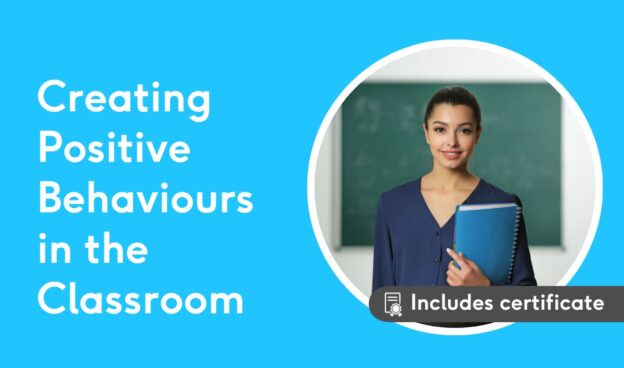Educators play a crucial role in creating a positive classroom environment and fostering positive behaviours among their students. In this short course you can read the guidance below, watch the short video and take the lesson from Executive Headteacher, Kevin Buchannan from Ed-Start Schools. Kevin’s PowerPoint is also saved in the materials section of this course.
Here are some strategies to help educators achieve this:
Set Clear Expectations: Clearly communicate your expectations for behaviour in the classroom. Be specific about what is and isn’t acceptable. Discuss these expectations with your students at the beginning of the school year and revisit them as needed.
Model Positive Behaviour: Teachers should model the behaviour they expect from their students. If you want your students to be respectful, punctual, and attentive, demonstrate these qualities in your own actions and interactions.
Positive Reinforcement: Encourage positive behaviour by using praise and rewards. Recognize and acknowledge students when they exhibit the desired behaviours. This can be as simple as verbal praise or more tangible rewards like stickers, small treats, or privileges.
Classroom Rules and Consequences: Establish clear, fair, and consistent consequences for misbehaviour. Students need to understand the potential outcomes of their actions. Make sure the consequences are appropriate and proportionate to the behaviour.
Consistency: Consistency is key in reinforcing positive behaviour. Be consistent in applying rules and consequences so that students know what to expect.
Active Engagement: Plan engaging and interactive lessons. When students are actively engaged, they are less likely to engage in disruptive behaviour.
Build Positive Relationships: Create a supportive and caring classroom environment. Build positive relationships with your students so they feel valued and respected. When students feel connected to their teacher, they are more likely to behave positively.
Differentiation: Recognise that each student is unique and may have different needs and learning styles. Differentiating your teaching methods and materials can help engage all students, reducing behaviour issues.
Classroom Design: Arrange the classroom in a way that minimizes distractions and encourages focus. The physical layout of the classroom can impact behaviour.
Conflict Resolution: Teach students conflict resolution skills, so they can resolve issues with their peers in a positive way. Encourage open communication and problem-solving.
Individualised Behaviour Plans: For students with persistent behaviour issues, develop individualized behaviour plans. These plans should be tailored to the specific needs of the student and include goals and strategies for improvement.
Regular Communication: Maintain open communication with parents and caregivers. Keep them informed about their child’s behaviour, both positive and negative, and work together to address any concerns.
Peer Support: Encourage a sense of community in the classroom. Peer support and positive peer pressure can be powerful tools in promoting good behaviour.
Restorative Practices: Consider using restorative practices to address behavioral issues. These approaches focus on repairing harm and restoring relationships rather than punitive measures.
Professional Development: Continuously educate yourself on effective classroom management strategies and behaviour interventions. Attend workshops, read books, and seek guidance from experienced educators. Creating a positive classroom environment and fostering positive behaviour is an ongoing process. It requires patience, empathy, and a commitment to the well-being of your students. Tailor your approach to the unique needs and characteristics of your class while staying true to the principles of fairness, consistency, and positivity.
The video below, from Adriana Cantisani, is great way to get some quick tips on taking control of the behaviours in your classroom. Adriana has many other helpful videos on her YouTube channel and website.


